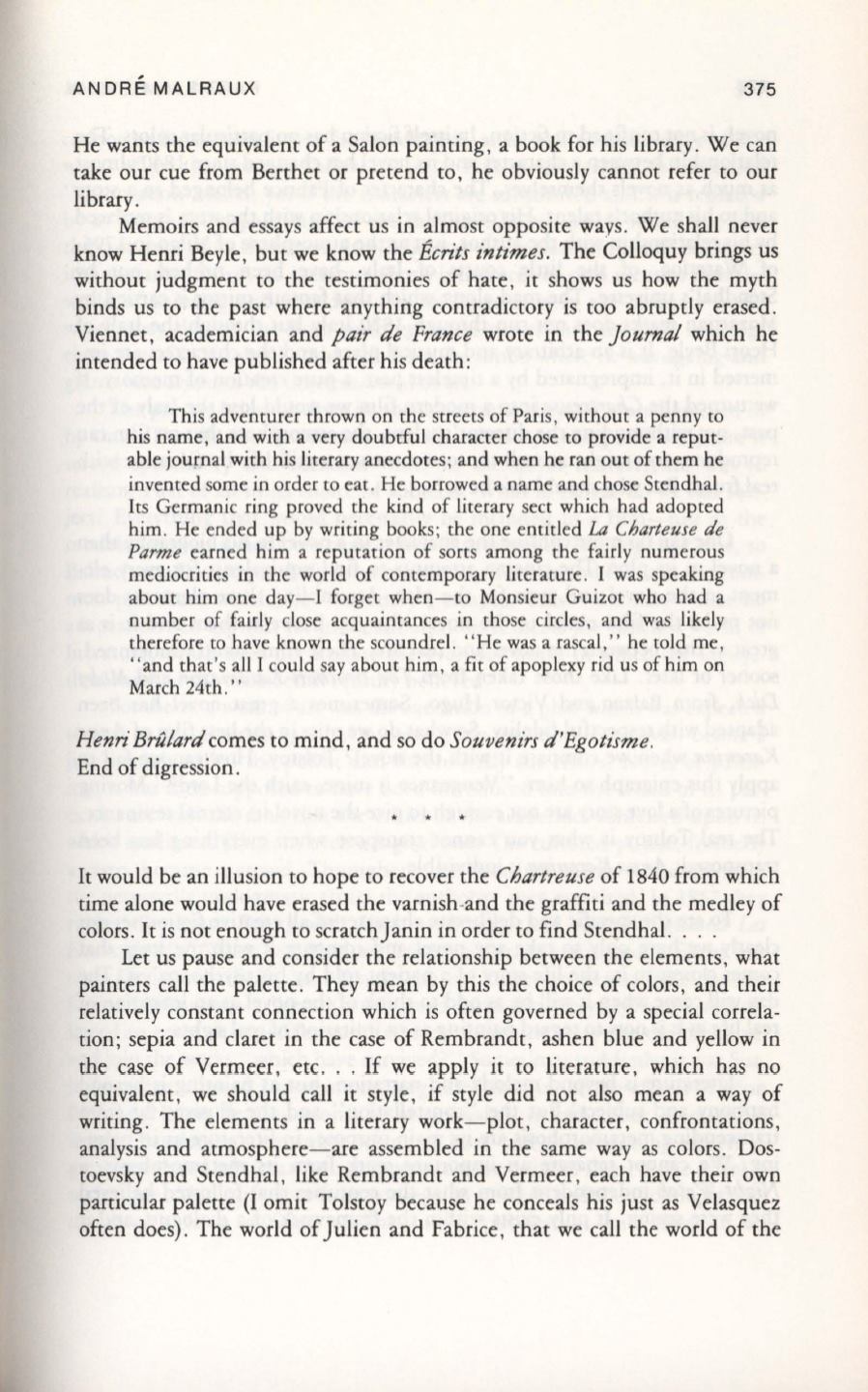
ANDRE MALRAUX
375
He wants the equivalent of a Salon painting, a book for his library . We can
take our cue from Berthet or pretend to, he obviously cannot refer to our
library.
Memoirs and essays affect us in almost opposite ways. We shall never
know Henti Beyle, but we know the
Bcnts intimes.
The Colloquy brings us
without judgment to the testimonies of hate, it shows us how the myth
binds us to the past where anything contradictory is too abruptly erased .
Viennet, academician and
pair de France
wrote in the
Journal
which he
intended to have published after his death:
This adventurer thrown on the streets of Paris, without a penny to
his name, and with a very doubtful character chose to provide a reput–
able journal with his literary anecdotes; and when he ran out of them he
invented some in order to eat. He borrowed a name and chose Stendhal.
Its Germanic ring proved the kind of literary sect which had adopted
him. He ended up by writing books; the one entitled
La
Charteuse de
Parme
earned him a reputation of sons among the fairly numerous
mediocrities in the world of contemporary literature. I was speaking
about him one day- I forget when-to Monsieur Guizat who had a
number of fairly close acquaintances in those circles, and was likely
therefore to have known the scoundrel. " He was a rascal ," he told me,
"and that's all I could say about him, a fit of apoplexy rid us of him on
March 24th ."
Henri Brolard
comes to mind, and so do
Souvenirs d'Egotisme .
End of digression .
It
would be an illusion to hope
to
recover the
Chartreuse
of 1840 from which
time alone would have erased the varnish-and the graffiti and the medley of
colors .
It
is not enough to scratchJanin in order to find Stendhal. ...
Let us pause and consider the relationship between the elements, what
painters call the palette . They mean by this the choice of colors, and their
relatively constant connection which is often governed by a special correla–
tion; sepia and claret in the case of Rembrandt, ashen blue and yellow in
the case of Vermeer , etc. .. If we apply it to literature, which has no
equivalent , we should call it style, if style did not also mean a way of
writing. The elements in a literary work-plot, character, confrontations,
analysis and atmosphere-are assembled in the same way as colors. Dos–
toevsky and Stendhal, like Rembrandt and Vermeer, each have their own
particular palette (I omit Tolstoy because he conceals his just as Velasquez
often does). The world of Julien and Fabrice , that we call the world of the


